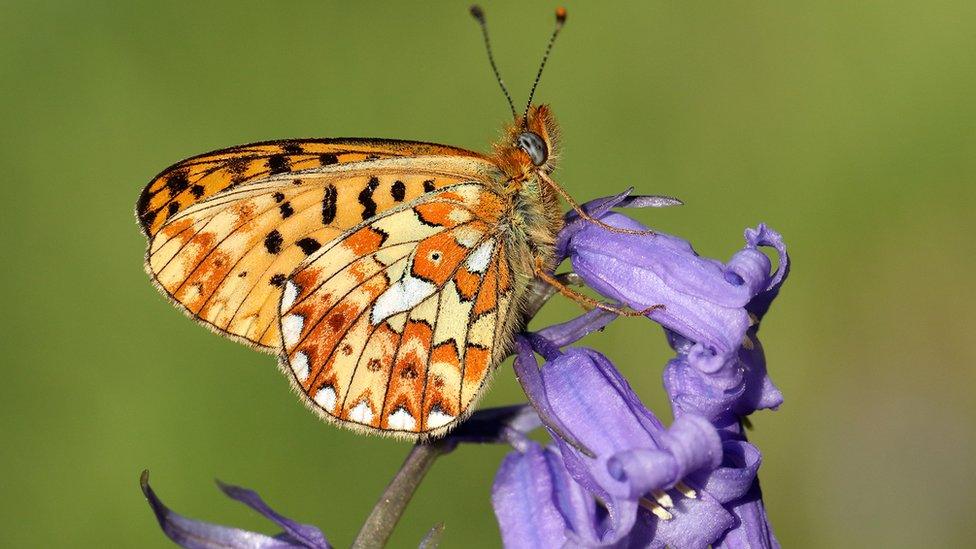Butterflies: Half of British butterflies on new Red List
- Published
- comments

The pearl-bordered fritillary butterfly
Two-fifths of Britain's butterfly species are at risk of becoming extinct, according to a new report.
The Butterfly Conservation wildlife charity has released what they call a Red List, which found a 26% increase in the number of species threatened with extinction - an increase from ten years ago.
The charity says loss of habitat, climate change and nitrogen pollution are the reasons why half of British butterflies are now on the Red List.
The Butterfly Red List
The black-veined white butterfly
The Red List looks at which butterfly species are at risk of declining in their numbers.
The charity used data that volunteers had gathered to look at all the butterflies being born regularly, and compared that against the criteria of extinction risk set out by the International Union for Conservation of Nature (IUCN).
They found of the 62 species they looked at, four are extinct in Britain, 24 are classed as threatened and five as near threatened.
When an animal or insect becomes extinct, it means that there are no more left on the planet.
Head of Science for Butterfly Conservation, Dr Richard Fox, says: "Shockingly, half of Britain's remaining butterfly species are listed as threatened or Near Threatened on the new Red List.
"Even prior to this new assessment, British butterflies were among the most threatened in Europe, and now the number of threatened species in Britain has increased by five, an increase of more than one-quarter.
While some species have become less threatened, and a few have even dropped off the Red List, the overall increase clearly demonstrates that the deterioration of the status of British butterflies continues apace.
Why are butterflies declining?
It's good news for the high brown fritillary butterfly which has improved its 'at risk' status
The most important cause of decline in the butterfly species is loss of habitat or change in how land is used, but climate change is also a factor now too.
The report found that butterflies that are from northern areas, which are adapted to cooler or damper climates, are now listed as threatened or near threatened, which Dr Fox said is "probably no coincidence".
But it isn't all bad news, because of conservation efforts some species have improved their risk status.
The large blue, which became extinct in Great Britain in 1979, has been part of a successful reintroduction programme which has seen it move from critically endangered to near endangered.
The same has happened for the high brown fritillary, which has moved from critically endangered to endangered after a lot of work from the Butterfly Conservation to help the species.
Dr Fox says: "Where we are able to target conservation work, we have managed to bring species back from the brink, but with the extinction risk increasing for more species than are decreasing, more must be done to protect our butterflies from the effects of changing land management and climate change."
He adds: "Without action it is likely that species will be lost from Britain's landscapes for good."
- Published28 September 2020
- Published16 July 2021
- Published20 January 2021
